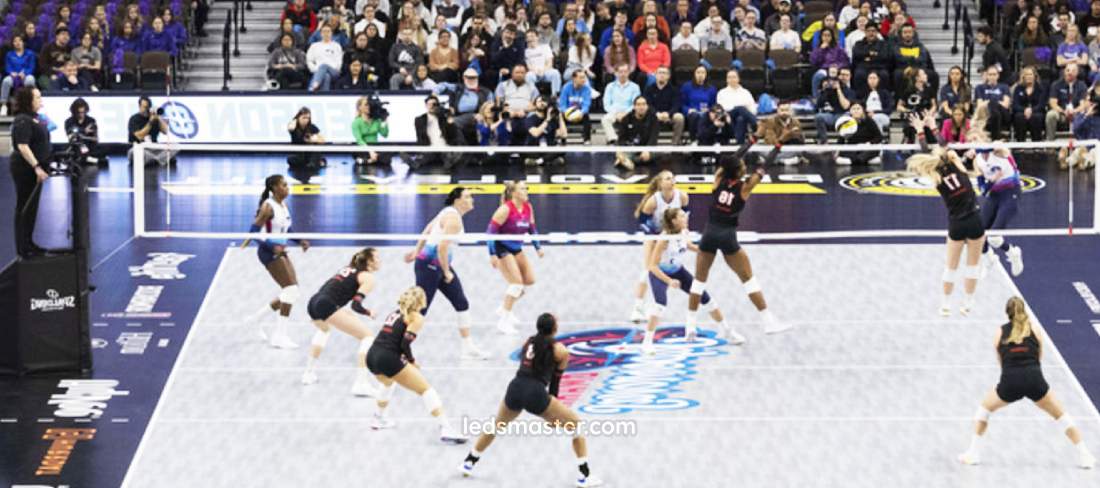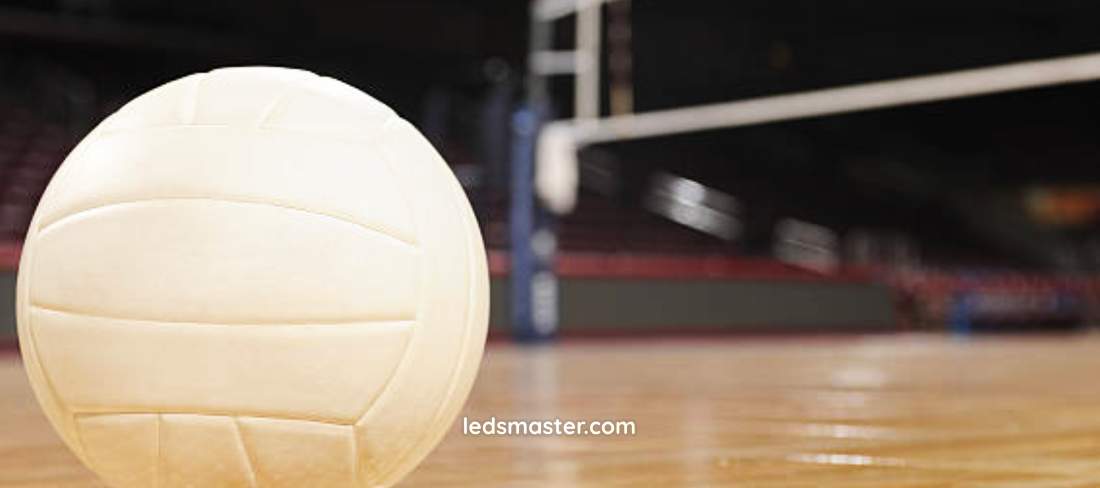Dive into the world of volleyball court lighting replacement and discover how the right lighting can elevate your court from ordinary to extraordinary. Ready to shine a new light on your game? Let’s explore the transformation together!
Get your complimentary lighting design today
The performance of lighting systems can decline due to wear and tear, technological advancements, or increased energy costs, making replacement necessary. Upgrading or replacing volleyball court lighting can enhance player experience, improve energy efficiency, and reduce long-term maintenance costs. This article explores the reasons for replacing volleyball court lights, factors to consider during replacement, and how to choose the right lighting solution for your facility.
Table of Contents
ToggleAs lighting systems age, their efficiency and performance tend to decline. Traditional lighting technologies such as metal halide or high-pressure sodium lights gradually lose brightness and quality, resulting in uneven lighting across the court. This can affect the visibility of the ball and reduce player performance. Additionally, older lights tend to consume more energy over time, leading to higher electricity bills and increased operational costs.
LED technology offers a solution to this problem. As a more energy-efficient and durable option, LED lights maintain consistent brightness levels for years and use up to 70% less energy compared to traditional lights. Replacing outdated lighting systems with modern LEDs not only enhances the quality of light but also reduces energy costs.
One of the primary reasons for replacing volleyball court lighting is the escalating cost of maintenance. Traditional lighting systems, such as metal halide or fluorescent lights, require frequent bulb replacements and repairs, which can add up over time. As these systems age, they become more prone to failures, leading to costly repairs and downtime for the court.
LED lighting systems offer a longer lifespan—up to 50,000 hours—meaning fewer replacements and less maintenance overall. By upgrading to a more reliable lighting solution, facility managers can save on maintenance costs and reduce the frequency of disruptions caused by lighting failures.

Sports lighting standards are continuously evolving, particularly for venues that host professional or competitive events. Updated standards may call for improved lighting uniformity, reduced glare, or higher lux levels. If a volleyball court’s lighting no longer meets these standards, replacement may be necessary to ensure compliance and provide optimal visibility for players and spectators.
In some cases, regulations around energy efficiency and environmental impact may also require facilities to replace outdated lighting systems with more sustainable options. For instance, LED lighting is often favored due to its low energy consumption and minimal light pollution, helping facilities comply with modern regulations.
One of the most critical factors to consider when replacing volleyball court lighting is the choice of lighting technology. LEDs have become the preferred option due to their energy efficiency, long lifespan, and superior performance compared to traditional lighting systems. They provide better light quality, ensuring minimal glare and even distribution across the court, which is essential for a fast-paced sport like volleyball.
When selecting LED lights for a volleyball court, it’s important to consider the color temperature and CRI (Color Rendering Index). A high CRI ensures that colors appear more natural, which improves visibility during gameplay. For indoor courts, a color temperature of 4000K to 5000K is typically recommended for a bright and natural feel, while outdoor courts may benefit from slightly cooler lighting.
The layout and size of the volleyball court should be factored into the lighting replacement plan. Different court dimensions require different numbers and placements of lighting fixtures to achieve proper coverage and uniformity. For outdoor courts, taller poles with wider coverage may be needed to ensure the entire court is evenly illuminated, while indoor courts often rely on ceiling-mounted fixtures.
Additionally, the lighting design must ensure that shadows are minimized, and brightness is evenly distributed across the playing area. Courts that host professional or competitive events may need to adhere to specific lighting standards, such as achieving a minimum lux level of 500 to 750 lux for clear visibility.
Lighting uniformity is crucial for player safety and performance, as uneven lighting can create distracting shadows or cause areas of the court to be too dim. Professional lighting designers may be needed to create an optimal lighting layout that meets the needs of the court and enhances the experience for players and spectators alike.
Energy efficiency is a key consideration when replacing volleyball court lights. LED lighting systems consume significantly less electricity compared to traditional lighting solutions, leading to substantial long-term savings. While the initial investment for LED lights may be higher, the reduced energy consumption and longer lifespan of the lights offset these upfront costs.
Facility managers should calculate the potential energy savings over time when deciding on a lighting system. Replacing old lights with energy-efficient LEDs can reduce energy consumption by 50% to 70%, resulting in thousands of dollars saved annually, especially for facilities that frequently host night games or tournaments.
Another important factor to consider when replacing volleyball court lights is the durability of the new lighting system. Outdoor volleyball courts are exposed to the elements, including rain, wind, and temperature fluctuations, so it’s essential to choose lights that are weather-resistant and built to withstand harsh conditions. For example, LED lights designed for outdoor use are often rated as water-resistant (IP65 or higher) and are protected against dust and corrosion.
Indoor courts also benefit from LED lighting’s durability, as these lights are less prone to damage from impacts or vibrations compared to traditional bulbs. By investing in a durable lighting system, facility managers can reduce the frequency of replacements and minimize disruptions to gameplay.

When selecting new lighting for a volleyball court, it’s essential to evaluate the specific needs of the facility. Recreational courts, competitive courts, and professional venues all have different lighting requirements in terms of brightness, uniformity, and energy consumption. Recreational courts may require lower lux levels, around 200 to 300 lux, while competitive and professional courts need higher lux levels—up to 500 lux or more—to ensure optimal visibility.
The usage patterns of the court also play a role in determining lighting needs. For example, if the court is used frequently at night or during tournaments, a high-efficiency lighting system is crucial to keep operating costs low.
Budget is a key factor when planning a lighting replacement project. While LED lights typically cost more upfront compared to traditional lighting options, their energy savings and reduced maintenance requirements lead to significant cost reductions over time. Facility managers should consider the total cost of ownership, including installation, energy consumption, maintenance, and replacement costs, when making their decision.
Financing options or incentives for upgrading to energy-efficient lighting systems, such as rebates or grants, may also be available in some regions. These incentives can help offset the initial cost of installation and make it more affordable to replace outdated lighting systems.
Incorporating smart lighting solutions into a volleyball court lighting system can further improve efficiency and reduce costs. Smart systems can be programmed to adjust lighting levels based on time of day or court usage. For example, lights can automatically dim when the court is not in use or adjust brightness levels for different types of events. Motion sensors and timers can also be integrated into the system to minimize energy waste.
Smart lighting controls not only reduce energy consumption but also extend the lifespan of the lighting fixtures, as they prevent unnecessary usage. This is particularly beneficial for facilities that operate multiple courts or host events that vary in size and attendance.
Replacing volleyball court lights is a valuable investment that improves both the performance and energy efficiency of the facility. Aging lighting systems not only reduce visibility and player safety but also result in higher energy and maintenance costs. By upgrading to modern, energy-efficient lighting solutions such as LEDs, facility managers can enjoy long-term savings, enhanced lighting quality, and compliance with modern sports standards.
When replacing volleyball court lights, several factors must be considered, including the type of lighting technology, court layout, energy efficiency, and maintenance needs. By carefully evaluating these factors, facility managers can choose the best lighting solution that meets their budget and operational requirements while ensuring an improved experience for players and spectators alike.